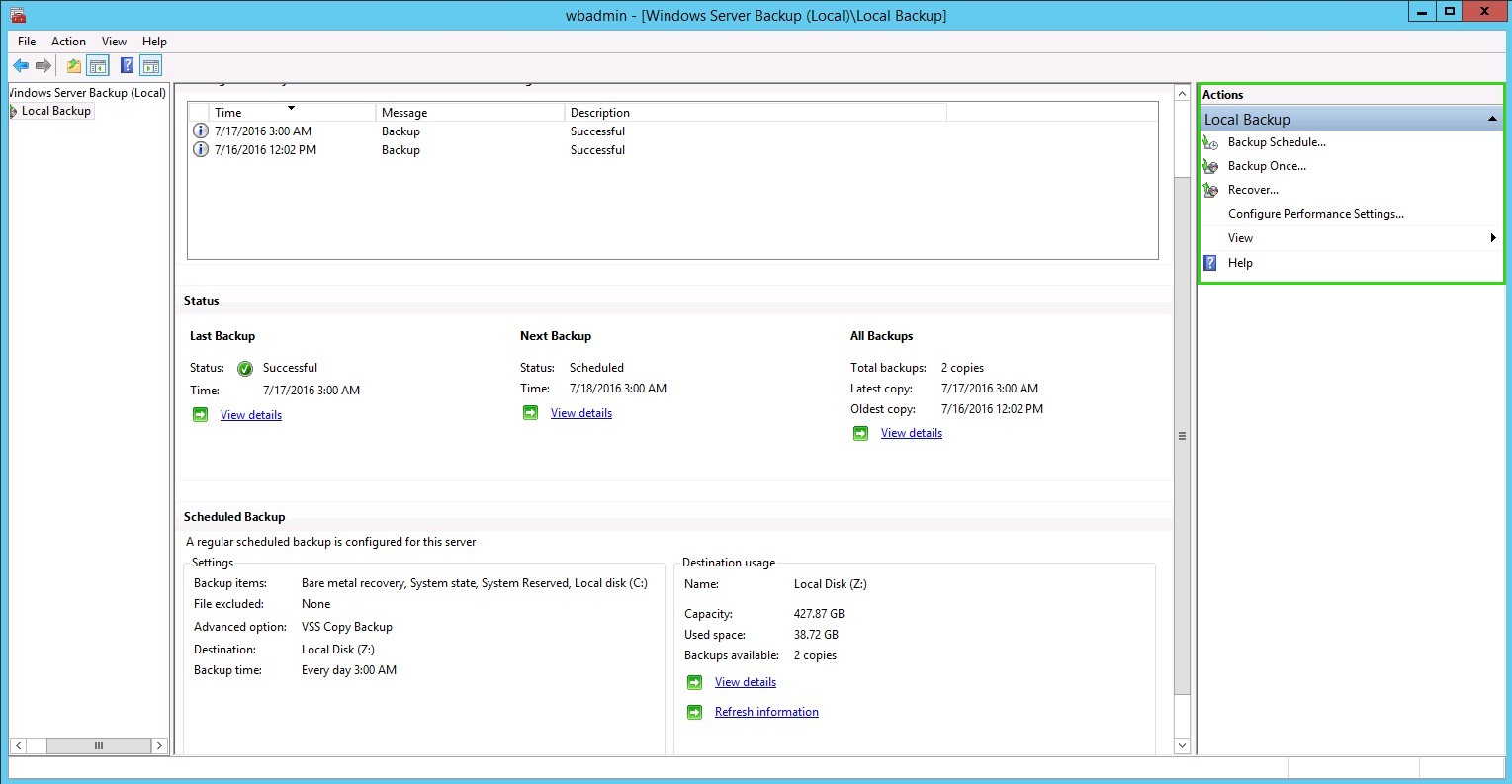

You have only a few selections to make to configure your backup.

You also want to make sure your backups complete in a timely manner this is where knowing the difference between full and incremental backups can offer value to you and your organization.īefore you perform your backup, you may need to define your backup settings. Try to schedule the backups after-hours, when the system is being used the least. When you back up your server, you want to make sure you schedule your backup times to not impact your network or your users. Not that to perform either backup or recovery, you do need to be a member of the Backup Operators or Administrators groups.Īfter you have determined your backup strategy, it is time to back up the server. In this section, you will learn how to use the backup and recovery tools to perform your daily tasks. Whether you choose to perform backup and recovery tasks with the GUI, command-line tool, or the PowerShell cmdlets, you are essentially performing the same task. Is it OK if a user has to wait 24 hours to recover a file? What if the user is the CEO? Is it OK to turn off a server during work hours? What if the server is mission critical to your organization? These are all key questions, among many others, that you need to address when defining your policies and procedures and determining the best way to handle the needs of your organization. In reality, the backup strategy is determined by your recovery requirements and what your service-level agreement is with your users and business. The type of backup you perform will always dictate the recovery options available to you. Even though backup and recovery are performed separately, they are joined together in form and function. This will make finding the right media for recovery easy. When you perform backups traditionally, you want to have the backups on a schedule so you are sure they are happening at regular intervals. Now that you have seen some of the tools for backups and recovery, it is time to put them to use. You will also learn about managing users, groups, directories and centralized desktops. Solutions providers will find this book valuable, because it provides information on automating tasks, managing storage, backup and recovery as well as performance tuning and maintaining virtual servers. This chapter excerpt on Backing Up and Recovering Your Server (download PDF) is taken from the book Microsoft Windows Server 2008 R2 Administration Instant Reference.


 0 kommentar(er)
0 kommentar(er)
